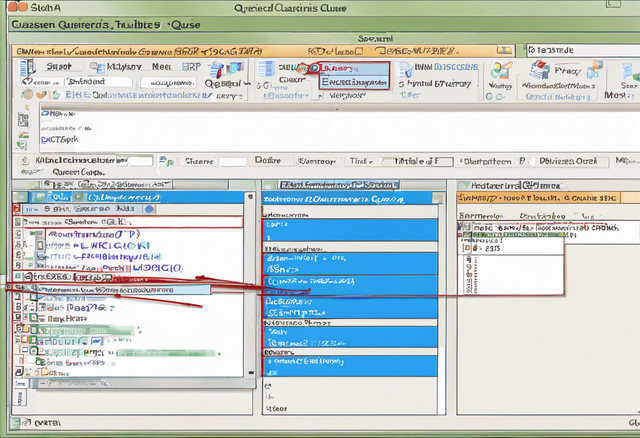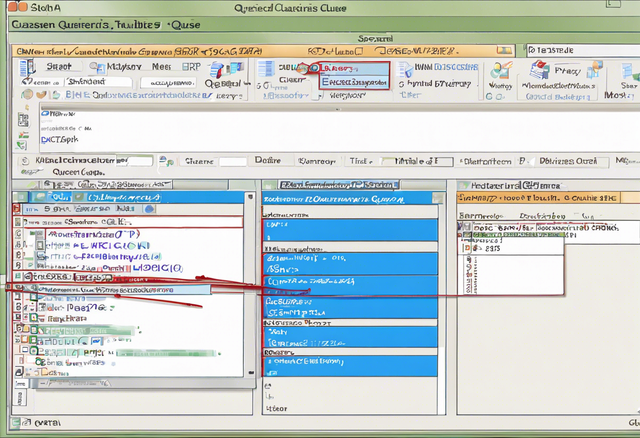SQL WITH Clause: Enhancing Your Queries
 Dishant Singh
Dishant Singh
SQL WITH Clause: Enhancing Your Queries
Nov 21, 2024 — 3 min read

SQL WITH Clause: Enhancing Your Queries
SQL WITH Clause: Enhancing Your Queries
In the realm of SQL, **WITH clause** stands as a powerful tool that empowers you to write more efficient and readable queries. Essentially, the WITH clause, also known as a **Common Table Expression (CTE)**, acts as a temporary named result set. This result set can be referenced multiple times within a single query, making your code more structured and easier to understand.
Why Use the WITH Clause?
Think of the WITH clause as a way to break down complex queries into smaller, manageable chunks. It allows you to define reusable subqueries that can be referenced throughout your main query. Let's explore some key benefits of utilizing the WITH clause:
- Improved Code Readability: By separating complex logic into CTEs, you improve the clarity of your queries. This makes it easier for you and others to understand the flow of data and the purpose of each step.
- Reduced Code Redundancy: CTEs eliminate the need for repetitive subqueries, making your code more concise and efficient. If you need to perform the same calculation multiple times, you can define it once in a CTE and reference it repeatedly.
- Enhanced Query Performance: While the WITH clause doesn't inherently speed up performance, it can help in cases where you're reusing the same complex subquery multiple times. By defining it as a CTE, the SQL engine can potentially optimize its execution.
Basic Syntax and Structure
The syntax of the WITH clause is straightforward:
WITH cte_name AS (
SELECT ...
FROM ...
WHERE ...
)
SELECT ...
FROM ...
WHERE ...
Let's break down the components:
- WITH: The keyword that introduces the Common Table Expression.
- cte_name: A unique name you assign to your CTE. This name is used to reference the result set later in the query.
- AS ( ): Parentheses enclose the SELECT statement that defines the CTE's result set.
- SELECT ... FROM ... WHERE ...: The standard SQL clauses used to define the data retrieved by the CTE.
- Main Query: The primary SELECT statement that utilizes the CTE's result set.
Illustrative Examples
Let's dive into practical examples to solidify your understanding of the WITH clause:
Example 1: Calculating Total Sales for Each Customer
Imagine you have tables for customer information and orders. You want to calculate the total sales for each customer. This is where CTEs shine!
In this example, we define a CTE called 'CustomerTotalSales'. This CTE calculates the sum of 'TotalAmount' for each 'CustomerID' from the 'Orders' table. In the main query, we join 'Customers' and 'CustomerTotalSales' to retrieve customer names and their total sales.
Example 2: Finding Customers with Multiple Orders
Let's explore another scenario. Suppose you want to identify customers who have placed more than one order. Here's how you can use a CTE:
The CTE 'CustomerOrderCount' counts the number of orders for each customer. The main query joins 'Customers' and 'CustomerOrderCount', filtering for customers with an 'OrderCount' greater than 1.
Example 3: Recursive CTEs: Finding Hierarchical Data
CTEs can also be used recursively, enabling you to navigate hierarchical data structures like organizational charts or bill of materials. Let's illustrate with a simple example:
In this recursive CTE, the initial SELECT statement retrieves the top-level employees (those without a manager). The 'UNION ALL' clause combines this initial result with the recursive part. The recursive part joins the 'Employees' table with the CTE itself, using 'ManagerID' to link employees to their managers. This process continues until all levels of the hierarchy are included.
Best Practices for Using WITH Clauses
While the WITH clause is a powerful tool, there are some best practices to keep in mind for optimal use:
- Use Descriptive Names: Choose names for your CTEs that clearly reflect their purpose. This makes your code easier to understand and maintain.
- Limit CTE Complexity: Avoid overly complex CTEs. Break down complex logic into multiple, simpler CTEs for better readability and maintainability.
- Avoid Excessive Use: Use CTEs judiciously. They can improve code clarity, but excessive use can lead to convoluted queries. If a subquery is simple and used only once, it might not be necessary to define it as a CTE.
- Understand Performance Considerations: While CTEs don't always impact performance, understanding their implications can help you optimize your queries. Consider the size and complexity of your CTE and how it affects your query's overall execution.
Conclusion
The **WITH clause** is a valuable addition to your SQL toolkit, enabling you to write more structured, readable, and potentially efficient queries. By breaking down your queries into logical units, using descriptive names, and following best practices, you can harness the power of CTEs to enhance your SQL coding experience. Remember to experiment and explore different ways you can leverage the WITH clause in your own SQL projects. Happy coding!
Subscribe to my newsletter
Read articles from Dishant Singh directly inside your inbox. Subscribe to the newsletter, and don't miss out.
Written by
Dishant Singh
Dishant Singh
Hello,I am a full stack web developer known for transforming ideas into stunning, interactive digital experiences. With a rich portfolio of successful projects, I specialize in creating visually appealing and highly functional websites.